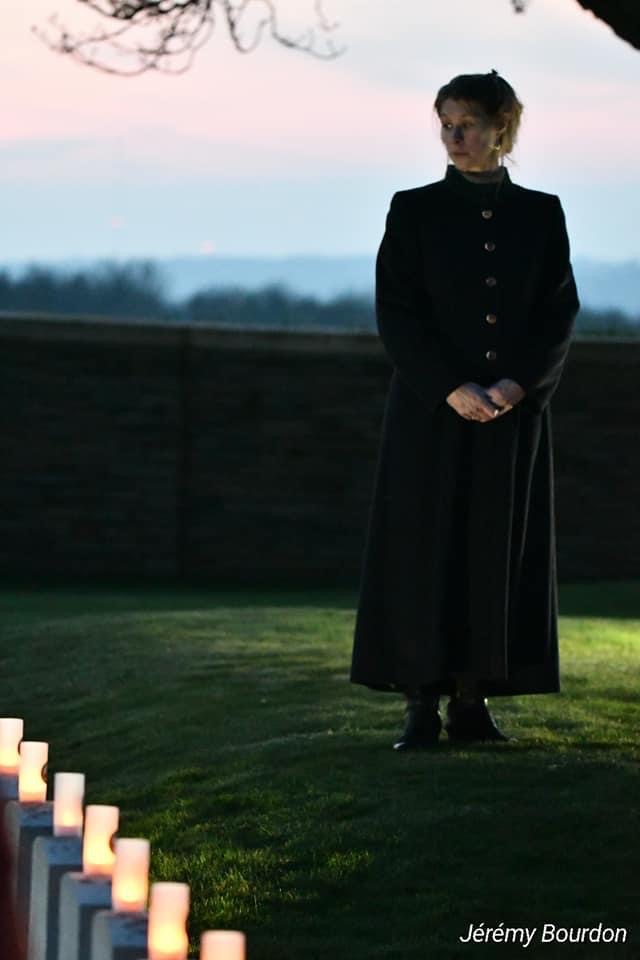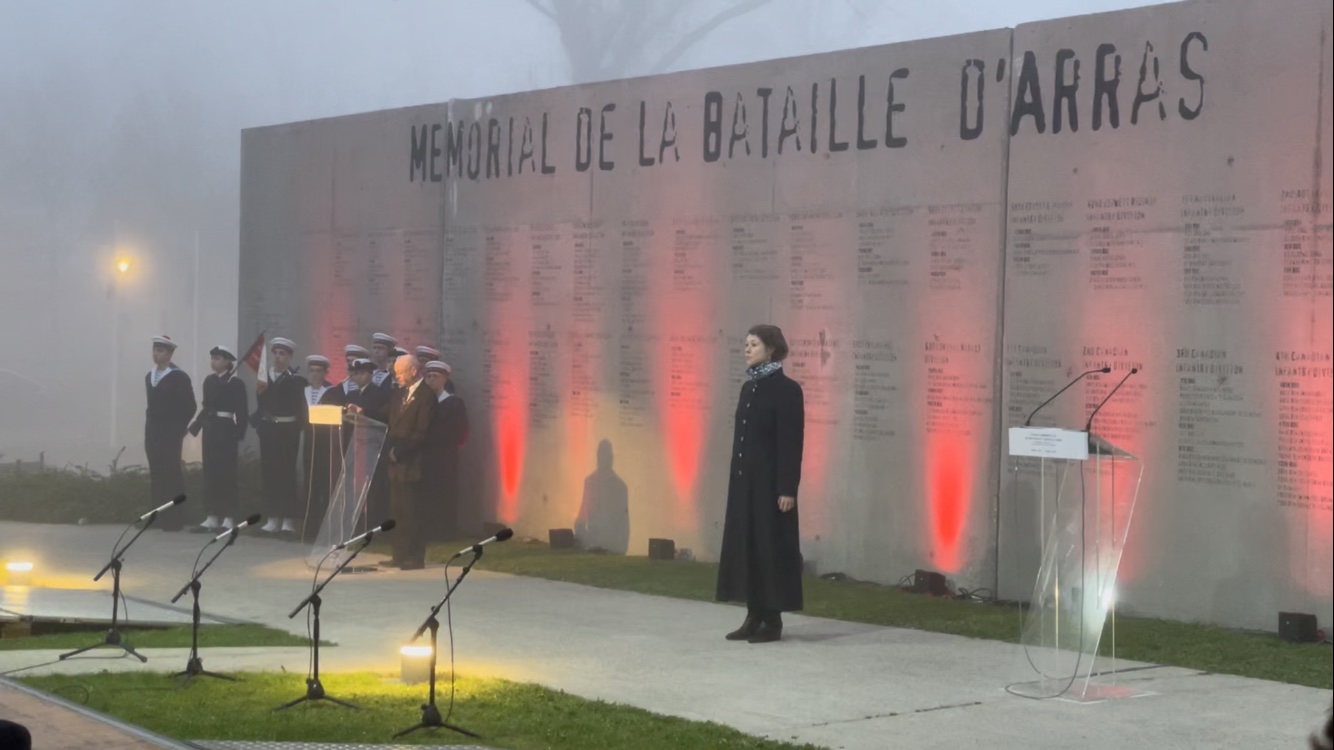During Easter weekend, I sang for two remembrance ceremonies in northern France.
On 8th April, we gathered to remember the soldiers who fought in the Battle of Vimy Ridge in 1917. Most of the soldiers were Canadian. They are commemorated on the Canadian National War Memorial Vimy. Today it is a beautiful, peaceful environment that invites refection on the cost of war. The trees – a whole forest – represent the fallen soldiers, and even with this visual reference it was difficult to grasp the immensity of the loses. The scars of war are still visible in the cratered ground, and even today it is too dangerous to walk in some areas because of unexploded bombs, fatal remnants from a war fought over 100 years ago.

Photo: Jérémy Bourdon
On 9th April, which was Easter Sunday, there was a dawn ceremony at the Wellington Tunnels. These tunnels housed over 24,000 allied soldiers before the Battle of Arras, a battle that claimed nearly 300,000 lives. The soldiers were from Germany, the United Kingdom, Canada, Australia, New Zealand, Newfoundland, South Africa, and the Pacific Islands. Many of these men and boys would have only a brief glimpse of France before they died or suffered life-changing injuries in a brutal battle.
To acknowledge the Māori miners, the Dutch Waka Crew performed a Haka and presented a Māori song. A prayer was read in Tahitian Māori. I visited New Zealand, the Cook Islands, Fiji, and Tahiti in 2004 in my gap year, and it felt almost absurd that men and boys from these beautiful islands, so remote from Europe, could have perished in northern France.

Photo: Eric Compernolle
If you are planning a trip, do consider visiting Arras. Parts of the Wellington Tunnels are open to the public and it is fascinating to experience how the soldiers were accommodated: not only seeing the artefacts, but also feeling the temperature and humidity underground. Vimy Ridge is stunning. Of course it is precisely because of the beautiful, expansive views that it was a tactically-interesting place during the Battle of Arras.
